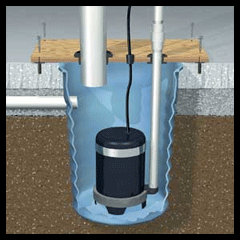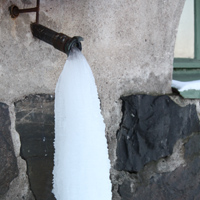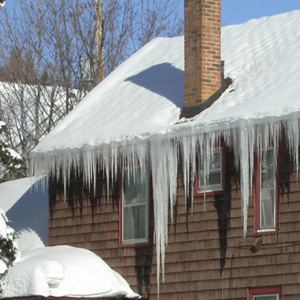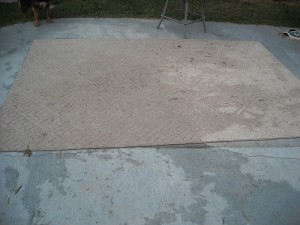 Mar-flex Waterproofing and Building Products offers the green drainage board solutions that fit any environment. At Mar-flex, we understand that the best way to assure dry foundations for our customers is through taking water and backfill pressures off the waterproofing membrane. Mar-flex offers 3 superior drainage board solutions, with up to 3 thicknesses and insulation ratings. These are designed to fit various roles in sand, clay, and rocky soil building conditions. Each Mar-flex drainage board is designed to channel water to the footer drain tiles, protect the membrane during backfill, and divert the water from the grade to the drainage system. Mar-flex even offers several “Green” drainage board solutions that help GC’s and building professionals attain LEED credits. Check out our selection today!
Mar-flex Waterproofing and Building Products offers the green drainage board solutions that fit any environment. At Mar-flex, we understand that the best way to assure dry foundations for our customers is through taking water and backfill pressures off the waterproofing membrane. Mar-flex offers 3 superior drainage board solutions, with up to 3 thicknesses and insulation ratings. These are designed to fit various roles in sand, clay, and rocky soil building conditions. Each Mar-flex drainage board is designed to channel water to the footer drain tiles, protect the membrane during backfill, and divert the water from the grade to the drainage system. Mar-flex even offers several “Green” drainage board solutions that help GC’s and building professionals attain LEED credits. Check out our selection today!
Don’t forget, you can contact Mar-flex by phone at (800) 498-1411, emailing us at info@mar-flex.com or visiting our website and utilizing our new chat tool. Also, you can view our specification information online in a simple to use database managed by ARCAT or by downloading our Mar-flex SpecMaster app for Android phones and tablets. Our cross-trained customer service professionals are on-hand to answer any questions you may have, as well as give helpful advice, installation instructions, and more. Contact us today!
 At Mar-flex, we offer a comprehensive selection of the world’s most innovative and effective waterproofing products. Now, we offer the safest way to apply these products, with Mar-flex’s new selection of safety equipment.
At Mar-flex, we offer a comprehensive selection of the world’s most innovative and effective waterproofing products. Now, we offer the safest way to apply these products, with Mar-flex’s new selection of safety equipment.  Sump pumps prevent the problem of basement flooding, by moving excess water out of your basement, and away from your home. Choosing the right system for your home will save you money and hassle. There are several factors to consider when choosing which sump pump you’ll use in your basement. Follow our guide and you will find that choosing the right pump has never been easier.
Sump pumps prevent the problem of basement flooding, by moving excess water out of your basement, and away from your home. Choosing the right system for your home will save you money and hassle. There are several factors to consider when choosing which sump pump you’ll use in your basement. Follow our guide and you will find that choosing the right pump has never been easier. Mar-flex is the leading innovator in the building product and waterproofing industry. Mar-flex continues with its reputation for innovation and the manufacture of durable, reliable solutions with the introduction of the Mar-flex Green line of products. Mar-flex makes it easier than ever to get LEED credits for your next build, with easy to install products that outperform the competition’s selection and are made of recycled materials. Mar-flex started this initiative with the popular
Mar-flex is the leading innovator in the building product and waterproofing industry. Mar-flex continues with its reputation for innovation and the manufacture of durable, reliable solutions with the introduction of the Mar-flex Green line of products. Mar-flex makes it easier than ever to get LEED credits for your next build, with easy to install products that outperform the competition’s selection and are made of recycled materials. Mar-flex started this initiative with the popular  Mar-flex Waterproofing and Building Products has become known for advancing the science of waterproofing, as well as creating techniques and products which have changed the waterproofing world. Continuing with a reputation for innovation, Mar-flex unveils the 362 Mastic All Season heavy-bodied trowel grade coating. This coating is perfect for patching tieholes, filling in honeycombed areas in both rough and smooth masonry surfaces, and fixing surface flaws. The 362 Mastic is known for remaining flexible, no matter how rough the freeze/thaw cycle is in your local environment. This product can be applied any time of the year, no matter what the temperature is outside, and its manufactured in a ready to use rubber coating.
Mar-flex Waterproofing and Building Products has become known for advancing the science of waterproofing, as well as creating techniques and products which have changed the waterproofing world. Continuing with a reputation for innovation, Mar-flex unveils the 362 Mastic All Season heavy-bodied trowel grade coating. This coating is perfect for patching tieholes, filling in honeycombed areas in both rough and smooth masonry surfaces, and fixing surface flaws. The 362 Mastic is known for remaining flexible, no matter how rough the freeze/thaw cycle is in your local environment. This product can be applied any time of the year, no matter what the temperature is outside, and its manufactured in a ready to use rubber coating. While stopping a leak, or repairing a hose down in your basement might be an easy job, there are forms of moisture penetration that happen during the winter, that involve much more hassle. Unless you are a frequent visitor to your attic during frigid winter months, this damage might even evade your notice.
While stopping a leak, or repairing a hose down in your basement might be an easy job, there are forms of moisture penetration that happen during the winter, that involve much more hassle. Unless you are a frequent visitor to your attic during frigid winter months, this damage might even evade your notice. amounts of damage to your roof in the pursuit of breaking up that annoyance. This means you shouldn’t do things like routinely remove snow from the roof or attempt to “chip away” the ice of an ice dam – as this will damage your shingles. You shouldn’t install large mechanical equipment, or water heaters in your attic, especially if it snows where you live. Not only does this present a fire hazard, but it increase the temperature in your attic. Also, never use salt or calcium chloride to melt snow on your roof, because these chemicals are corrosive and will destroy your metal gutters, downspouts, and flashings. Runoff water containing these chemicals damage nearby grass and plants.
amounts of damage to your roof in the pursuit of breaking up that annoyance. This means you shouldn’t do things like routinely remove snow from the roof or attempt to “chip away” the ice of an ice dam – as this will damage your shingles. You shouldn’t install large mechanical equipment, or water heaters in your attic, especially if it snows where you live. Not only does this present a fire hazard, but it increase the temperature in your attic. Also, never use salt or calcium chloride to melt snow on your roof, because these chemicals are corrosive and will destroy your metal gutters, downspouts, and flashings. Runoff water containing these chemicals damage nearby grass and plants. When you find that your basement is soaked, no matter what the cause, it is a hassle. One of the most vulnerable, and often affected places is the basement carpet. Carpet that has become wet must be dried out within 48 hours, or mold will begin to grow. If you need to clean a carpet that has become wet, then follow our guide, or call
When you find that your basement is soaked, no matter what the cause, it is a hassle. One of the most vulnerable, and often affected places is the basement carpet. Carpet that has become wet must be dried out within 48 hours, or mold will begin to grow. If you need to clean a carpet that has become wet, then follow our guide, or call  contaminated them. If you think some of your possessions might be salvageable, have them cleaned professionally. Mold or mildew may have begun to grow on them, depending on when you caught the dampness, and will have to be discarded.
contaminated them. If you think some of your possessions might be salvageable, have them cleaned professionally. Mold or mildew may have begun to grow on them, depending on when you caught the dampness, and will have to be discarded.